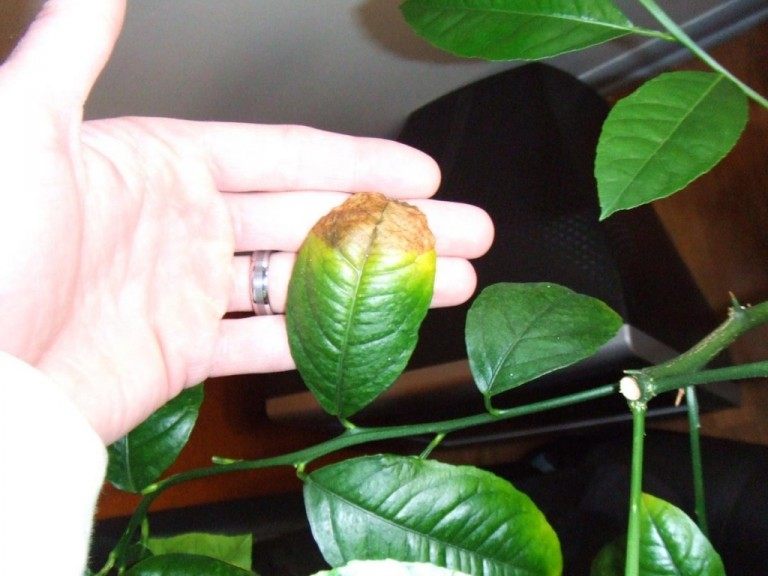
Why do leaves dry on plants. Dried plant leaves - best friends forum.
Drying of the tips of the leaves does not always lead to their falling off or wilting, more often it does not affect even 1% of the leaf surface. But it invariably affects the attractiveness of the plant, spoils it appearance. And this phenomenon should not be ignored, even if it seems to be purely seasonal (most often winter). It may take only a slight adjustment of the conditions to fight, but if you are inattentive and miss real reason, the plant will suffer much more, and the fight against the problem will be long.
Moreover, its very common name testifies to the importance of ancient plant medicine. The cultivation of sage to the ancient Greeks and Romans was not as important for culinary use, but this fragrance was mainly cultivated as an herbal plant.
In the ancient Romans, the sage was so appreciated that he called it the "sacred Coat of Arms", and there was a special ritual for its collection. In Christianity, the connection between sage and the Virgin Mary has always been strong. The legend says that the Mother of God and the baby Jesus, fearful of Herod's heroes who wanted to kill the Savior, hid in the sage's heap, which, as the legend says, flourished with high, pointed ears to better hide them.
Step One - Comprehensive Diagnosis
When dry, dark leaf tips appear on a plant, one usually immediately thinks of too dry air. Insufficient humidity is indeed the most common cause of this phenomenon, but far from the only one. And the wrong diagnosis, the exclusion from the assumptions of a whole range of other possible factors can turn into a big disaster. After all, if you try to increase the humidity of the air when waterlogging the earthen coma, which led to stem rot, you can achieve the opposite results.
From that moment on, the wise plant was consecrated to Our Lady. At the end of August, during the feast of the Assumption, the sage was one of the herbs dedicated to the Mother of God. It was believed that these herbs, including sage, are protected from magic, hail and favor fertility.
Here is another reason why sage cultivation was so important. However, sage has long been considered a medicinal plant and not a very useful flavor in the kitchen. Over time, the sage spread to cuisines throughout the Mediterranean basin. Today in Italy, sage is one of the most typical Italian dishes.
In addition to insufficiently high humidity, drying of the tips of the leaves can lead to:
- watering with low-quality water, especially hard and unsettled (dried tips in this case - burns from salts);
- violation of the comfortable humidity of the substrate in the tank - too intense waterlogging or prolonged drought;
- the spread of pests, the depressed state of the infected plant;
- improper feeding - lack or excess of fertilizers;
- direct midday rays on the plant or too bright lighting for crops that prefer shading;
- too hot conditions, elevated air temperatures (especially during wintering);
- complete filling of free soil with a rhizome, which has become a cramped container.
 http://www.botanichka.ru/wp-content/uploads/2015/12/Houseplant-02-520x390.jpg 520w, http://www.botanichka.ru/wp-content/uploads/2015/12/Houseplant -02.jpg 1024w" style="margin: 0px 10px 10px 0px; padding: 5px border: 1px solid rgb(221, 221, 221); font-style: inherit; font-variant: inherit; font-weight: inherit; font-stretch: inherit; font-size: inherit; line-height: inherit; font-family: inherit; vertical-align: baseline; height: 240px; max-width: 640px width: 320px background: rgb(244, 244, 244);" title="(!LANG:Leaf tips dry lemon tree" />
http://www.botanichka.ru/wp-content/uploads/2015/12/Houseplant-02-520x390.jpg 520w, http://www.botanichka.ru/wp-content/uploads/2015/12/Houseplant -02.jpg 1024w" style="margin: 0px 10px 10px 0px; padding: 5px border: 1px solid rgb(221, 221, 221); font-style: inherit; font-variant: inherit; font-weight: inherit; font-stretch: inherit; font-size: inherit; line-height: inherit; font-family: inherit; vertical-align: baseline; height: 240px; max-width: 640px width: 320px background: rgb(244, 244, 244);" title="(!LANG:Leaf tips dry lemon tree" />
Description and cultivation of the sage
However, it is also common in England and America, where the Sage and Stuffed Onion recipe is a perfect contour for white meat chicken and turkey. Sage officinalis, owned by the Laminace family, looks like a woody and evergreen shrub that grows in dense bushes.
Its height can reach the subway. The plant's stems are light green when sage is young, becoming darker and more woody over the years. The leaves of Sage are grey-green, lanceolate, the top of the page is equipped with very small and thick hair, which gives them a velvety appearance while the underside is clearly ribbed and coarser.
And in order to accurately diagnose the cause, it is necessary to responsibly approach the process of assessing the state of the plant, in which it is better to move from the opposite, by the method of elimination:
- Carefully inspect the plant, especially the shoots and the underside of the leaves for signs of pests and other signs of inhibited growth.
- Check if the container is too tight and if roots are showing through the drain hole.
- Determine the moisture content of the substrate, the degree of drying between treatments. If you find it difficult to assess just "by touch", buy special indicators at the flower shop that will show how dry the soil is.
- Analyze the feeding schedule and compare it with the recommended for a particular plant. In citrus fruits, for example, the tips dry, usually with a lack of iron. And in most non-flowering crops, too frequent top dressing can cause serious developmental disorders, including at the initial stage manifested in drying tips.
- Analyze water quality. If you use running tap water, this is the most likely cause of leaf drying: it contains impurities of fluorine and chlorine, salts and other unpleasant heavy substances that lead to a violation of soil characteristics and change its balance.
- Determine the humidity of the air, its dryness and comfort for moisture-loving species.
Deviation on one point will reveal the main reason for the drying of the tips of the leaves, on 2 or more - will indicate the need for comprehensive measures.
flowers purple flowers, but some cultivars can also be white, bear long stems, grow in thorns and bloom from June to late summer. These flowers are hermaphrodites, that is, in the same color we have male and female organs, and they are polluted by insects.
For optimal cultivation of sage, it is important to remember that this plant loves heat and sun. Those who enjoy cultivating fragrance know that many of these plants are rustic and want a few things to grow lush and healthy. The sage is no exception, if you provide it with drained soil, sun and heat, the plant will grow beautifully and thickly.
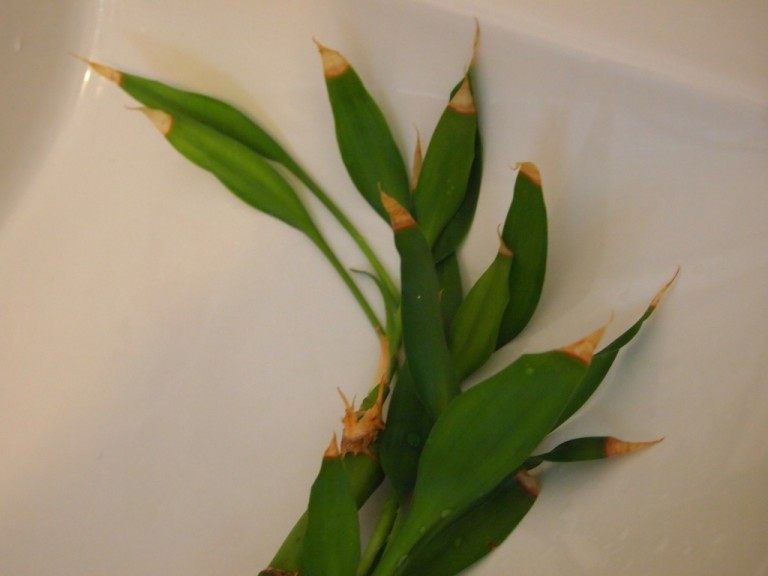 http://www.botanichka.ru/wp-content/uploads/2015/12/Houseplant-03-520x390.jpg 520w, http://www.botanichka.ru/wp-content/uploads/2015/12/Houseplant -03.jpg 1024w" style="margin: 0px 10px 10px 0px; padding: 5px border: 1px solid rgb(221, 221, 221); font-style: inherit; font-variant: inherit; font-weight: inherit; font-stretch: inherit; font-size: inherit; line-height: inherit; font-family: inherit; vertical-align: baseline; height: 240px; max-width: 640px width: 320px background: rgb(244, 244, 244);" title="(!LANG: Dracaena Sander's Leaf Tips Are Drying" />!}
http://www.botanichka.ru/wp-content/uploads/2015/12/Houseplant-03-520x390.jpg 520w, http://www.botanichka.ru/wp-content/uploads/2015/12/Houseplant -03.jpg 1024w" style="margin: 0px 10px 10px 0px; padding: 5px border: 1px solid rgb(221, 221, 221); font-style: inherit; font-variant: inherit; font-weight: inherit; font-stretch: inherit; font-size: inherit; line-height: inherit; font-family: inherit; vertical-align: baseline; height: 240px; max-width: 640px width: 320px background: rgb(244, 244, 244);" title="(!LANG: Dracaena Sander's Leaf Tips Are Drying" />!}
Despite the falsification of frost, it is recommended to hang it on the wall or plant it near a hedge protecting it from the most intense ice cream. If you want to pick up its fragrant leaves even in winter time, if your winter is long in the area and the temperature drops a lot, it grows wisely in a jar, which then retreats to a warm and bright place during the bad season.
As for the soil, it is a loose soil that provides good drainage, slightly calcareous and slightly sandy. It does not like soils that are too heavy or heavy that drain poorly because they are susceptible to root rot. Growing can get ancient and messy.
How to solve the problem with dry leaf tips?
General hygiene measures
Regardless of the results of the cause assessment, the first step is to take general hygiene measures:
- Start by removing the risk of soil contamination, eliminating salt deposits: remove white plaque from the surface of the substrate, replace the surface layer of soil with a fresh, clean substrate.
- Be sure to clean the leaves of the plant from dust, give it a shower and follow the "behavior" of your pet.
- Try to change the humidity of the air by placing a container of water or humidifiers nearby.
These measures must be taken regardless of whether it was possible to find the cause and what it was. After all, even if the plant is infected with pests, increasing the humidity will serve as a preventive measure.
A light pruning that eliminates messy branches and old woody branches will also help keep it even at the base and in order. Its propagation is carried out by seeds or grassy cuttings. It is possible to propagate adult and lush saliva with the help of a substructure of the lower branches.
In terms of varieties, you will find numerous news about potato sage and unusual varieties in this post. It is worth starting the cultivation of a sage just to enjoy its many properties. Being available all year round, sage leaves can be harvested fresh when needed.
But the 2nd and 3rd steps have their own exceptions:
- obvious waterlogging of the substrate, which led to rotting of the shoots, during which the leaves can be cleaned, but it is better not to increase the air humidity until the soil dries out;
- if the problem manifests itself on plants with pubescent leaves that cannot be cleaned of dust by classical methods, then it is better to refuse cleaning and showering.
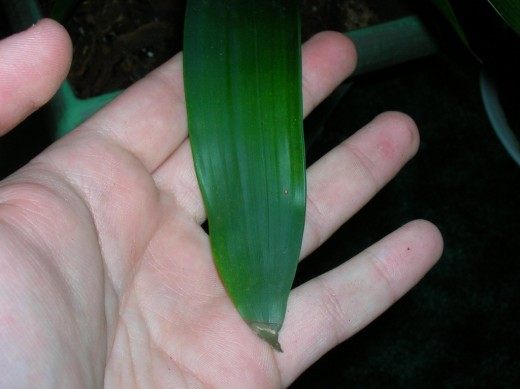 http://www.botanichka.ru/wp-content/uploads/2015/12/Houseplant-04-768x575.jpg 768w, http://www.botanichka.ru/wp-content/uploads/2015/12/Houseplant -04-520x389.jpg 520w, http://www.botanichka.ru/wp-content/uploads/2015/12/Houseplant-04.jpg 1024w" style="margin: 0px 10px 10px 0px; padding: 5px border: 1px solid rgb(221, 221, 221); font-style: inherit; font-variant: inherit; font-weight: inherit; font-stretch: inherit; font-size: inherit; line-height: inherit; font-family: inherit; vertical-align: baseline; height: 239px; max-width: 640px width: 320px background: rgb(244, 244, 244);" title="(!LANG:Gusmania leaf tips dry" />!}
http://www.botanichka.ru/wp-content/uploads/2015/12/Houseplant-04-768x575.jpg 768w, http://www.botanichka.ru/wp-content/uploads/2015/12/Houseplant -04-520x389.jpg 520w, http://www.botanichka.ru/wp-content/uploads/2015/12/Houseplant-04.jpg 1024w" style="margin: 0px 10px 10px 0px; padding: 5px border: 1px solid rgb(221, 221, 221); font-style: inherit; font-variant: inherit; font-weight: inherit; font-stretch: inherit; font-size: inherit; line-height: inherit; font-family: inherit; vertical-align: baseline; height: 239px; max-width: 640px width: 320px background: rgb(244, 244, 244);" title="(!LANG:Gusmania leaf tips dry" />!}
If you want to keep them collected until the mushroom plant blooms or tear it apart. Drying time is quite long. To speed this up, you can after the leaves have dried, because they are kept in a ventilated place and in the shade, put the sage leaves in a warm oven, leaving the door open.
Sage contains essential oil, which consists mainly of thujone and other minor components such as acetyl acetate, camphor, quinol and others. This fragrance is considered a panacea for a large number of disorders. Ancient people knew it so that the old saying goes.
The second important step is also general - individual care. Houseplants are all different, and they also need far from the same care. You can not add orchids, chlorophytum and cacti with the same frequency. Each plant should receive exactly the care (and those conditions) that it needs. Check your exit strategy and make sure you stick to this principle. If not, re-build the care program by studying the information about each plant.
"Whoever has a wise man in a garden has health in his body." Therefore, it is important to devote yourself to the cultivation of sage, even if you do not have a vegetable garden where you cannot miss it, you can plant it even in the corner of the garden or in a large container on the terrace. Since the time of the ancient Romans, its anti-inflammatory, balsamic, digestive and bactericidal properties have been known.
Shown bactericidal properties for the prevention and treatment of respiratory diseases such as coughs, colds and throat irritations. It is indicated for gingivitis and abscesses. It also offers good responses to water retention, migraine and rheumatism.
Further measures depend directly on the cause of the drying of the tips of the leaves.
If the tips of the leaves dry out due to dry air
The problem with dry air can be solved by standard methods:
- spraying (not suitable for flowering plants and pubescent leaves)
- installation of special humidifiers;
- installing pallets or trays with wet pebbles, moss, expanded clay, on which they put a pot with a plant so that the bottom does not touch the water;
- placement of plants in flower showcases.
If the tips of the leaves dry out due to water quality
If the drying of the tips of the leaves on your plant has caused water quality, immediately make changes to the usual watering pattern:
In addition, this beneficial aroma is able to relieve painful menstrual syndromes and menopausal disorders, especially those hot flashes called "caldane". Sage is a useful stimulant for the body and an infusion is excellent in case of depression due to nervous exhaustion and even in case of convalescence.
It is very beneficial for the brain and helps memory. For external use, it is great for treating dermatitis, ulcers, and ulcers. Sage leaves rubbed on the teeth were an ancient whitening and cleansing agent. In addition, sage with balsamic properties keeps breath fresh and eliminates bad breath.
- check what water is recommended to water your plant (perhaps it needs acidified or especially soft water);
- refuse to use running water, let it stand for at least 24 hours (and preferably several days) in containers, then carefully drain;
- replace tap water with rain, melted water, boiled water.
If the tips of the leaves dry due to improper watering
If the cause of the problem lies in the wrong watering mode and violation of the comfortable moisture content of the substrate, the actions should be different:
For this reason, many toothpastes are based on sage. Bathing in the bath, inserting a couple of handfuls of sage leaves, promotes invigorating skin. Lotions prepared with this fragrance detoxify and stabilize the skin. Sage essential oil is a very powerful substance that encapsulates all the qualities of the plant itself, but contains a high percentage of joyone and ketones, and is used internally only on prescription.
The cultivation of fragrances in general, and the dedication to the cultivation of the sage in particular, as you can see by looking at its many properties, is really beneficial. If you want to find another medicinal plant, such as sage, but the lesser known green anise, is a plant that deserves to be spread more widely.
- Learn about the basic preferences of the plant (today, for most species, the recommendations of "poor or abundant watering" have long been replaced by more precise guidelines).
- in case of waterlogging, which has already led to the process of decay and a violation of the air permeability of the soil, evaluate the quality of the drainage and drain hole. If they are OK, let the substrate dry almost completely before the next procedure and postpone watering. If the problem is a small drain hole, lack of drainage, proceed with an emergency plant transplant.
- In case of excessive drought, make watering more frequent and plentiful. But do not let the water stagnate in the pans, still spend each subsequent watering after the top few centimeters of soil have dried out for moisture-loving plants and the middle layer has partially dried out for ordinary crops and succulents.
- Consider purchasing self-watering pots that will save you forever from the hassle of customizing the frequency of treatments.
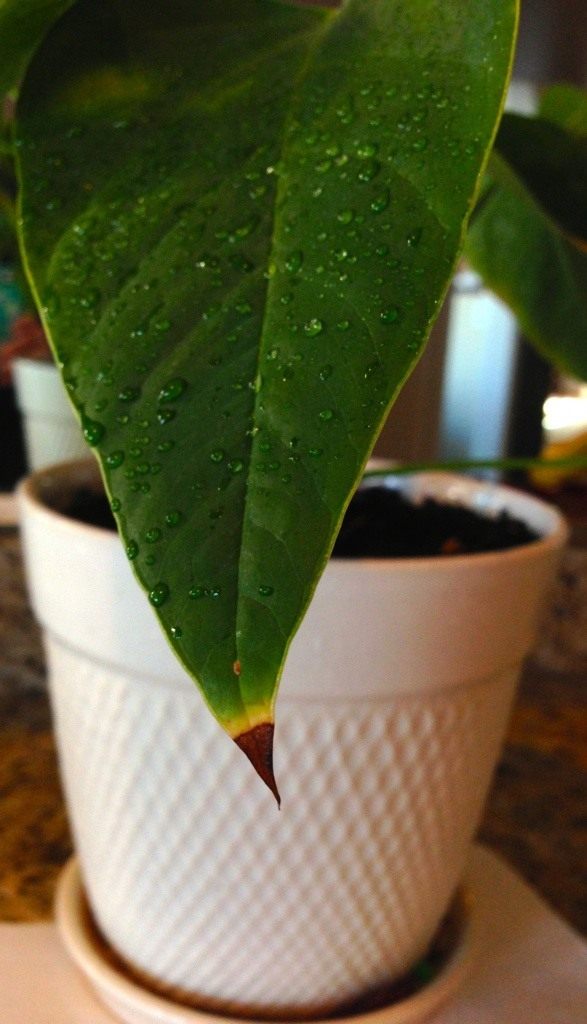
If you want to know more, please click on this banner below. Sage is one of the most popular flavors in Italian cooking to flavor foods. It is highly valued for its digestive qualities, which make meat and heavy foods easier to read.
In addition, sage, for its bactericidal qualities, is used in food preservation. One of the simplest, but delicious recipes teaches spaghetti season with butter and sage. Here, this flavor, with its slightly bitter and pungent aroma, is able to turn melted butter into a delicious condiment.
If the tips of the leaves dry due to pests
If the plant is infected with pests, start a complex fight:
- isolate the plant from other indoor crops to prevent the spread of pests;
- wash the leaves with soapy water;
- increase air humidity;
- start using special insecticides (you can evaluate the range of preparations of both a biological type and a purely chemical composition at the nearest flower shop or garden center);
- when transplanting a plant, carefully process and disinfect the container;
- step up preventive measures for the rest of the plants in the collection.
For some flower growers, the inhabitants of the windowsill become real pets, which are looked after with love. However, no matter how careful care is, home plants can still get sick. Diseases are different, and they occur for many reasons. However, we will talk about why the tips of the leaves dry in indoor plants. And, of course, we will not forget to suggest how to deal with it.
It is also used to season pasta stuffed with tortilla, ravioli and other stuffed pasta. Sage also tastes great in sauces and stir-fries, and is used a lot in fatty meats like pork and beef, making it more digestible.
With its spicy and slightly bitter flavor, it lends itself very well to sour cream cheeses. An excellent appetizer is fried sage leaves. Finally, it is used to flavor not only oils, but oils as well. A word of caution: don't bake too many sage leaves to release their bitter aftertaste completely.
Why do the edges of the leaves of indoor plants dry?
As happens most often, the appearance of drying tips in pets is associated with inaccuracies in care. So, for example, the most common reason why the leaves of indoor plants dry is the drying of the earth in a pot. This, of course, leads to untimely watering, which in the end is fraught with leaf fall.
Sage cultivation has not only been widely practiced since antiquity, but it is very popular even today, and now you know why. Cultivating aromatics is always beneficial, but it's not uncommon to find one that has all of these qualities.
Your sage will thrive with a little care and will give you long lasting aromatic and precious leaves. When he gets old, he will become woody and he will jump to the base, but if you are real passionate, this fact will make you more expensive, like an old, sharp, wise woman full of wrinkles who has lived a lot.
Another problem in caring for flowers can be, on the contrary, overflowing an earthy coma. True, the leaves of plants along the edges first dry out, and then turn a little black. If no measures are taken in time, when the soil is waterlogged, the roots of your pet will begin to rot, which is dangerous with death.
Another reason why the leaves of plants dry at the edges may be too dry indoor air. Especially this problem occurs during the heating season in those apartments where the heating is centralized. To a greater extent, indoor flowers suffer from drying out of the air in the room, which in their natural environment live in regions with high air humidity.
The word "ficus" in Latin means "fig", which in addition to the famous and appreciated fruit plant also includes an incredible series ornamental plants, is very popular and appreciated for the beauty of its foliage, which makes it especially decorative.
Although they offer a wide variety of trees, shrubs and climbers suitable for a wide variety of conditions environment, common features of this genus are leaves, simple, with linear margins and sometimes lobes, from flowers and therefore from harvested fruits, in particular. fertilization, turns into small fruit trees containing seeds characteristic of all types of Ficus Consisting in possession in all their parts of the petal, which easily appears after the engraving.
These are the most common causes of drying of the tips of the leaves of house plants. In rare cases, this defect is possible, for example, when using water for irrigation from a tap. Chlorine dissolved in it can lead to such “burns” that appear not only at the tips, but also over the entire surface of the leaves. A similar effect occurs when overfeeding the inhabitants of the window sills with complex fertilizers. However, in some cases, on the contrary, the lack of certain trace elements affects the condition of the leaves.
Among the many existing species, we mention those that are most interested as ornamental species. It is native to India and is the best known ornamental species, especially in Europe. As a flat plant, it has a modest development, while in its natural habitat it can reach colossal proportions, the trunk creates numerous roots, which, after touching the ground, act as auxiliary drums. The leaves are large, ovate and end with a pointed and conscientious consistency with a strong petiole, the lamina is thin, shiny dark green in color and has two halves angled to the central rib, the sprout is red or pink and turns green as it develops.
Sometimes the leaves of pets dry at the tips with sunburn or pest damage. The leaves dry first, and then may begin to curl.
The leaves of indoor plants dry - what to do?
The solution to the problem that has arisen depends directly on the reason that led to the fact that your pet began to dry the tips of the leaves.
It is very important to learn how to properly water your plants, which will help to avoid many problems. Watering is carried out as needed. Most flowers need moisture when the top layer of soil is a few inches dry. At the same time, do not fill the pot, especially in winter. In winter, cacti and do not need or require weak watering.
In addition, use water that has been settled for at least a day. Such measures will eliminate the drying of the leaves at the tips with a lack of watering or using tap water.
Regarding what to do if the tips of the leaves of indoor plants dry out due to flooding of the pot, we recommend removing the flower from the pot first. The pot must be washed with laundry soap. If necessary, rotten roots are removed from the plant. Sufficient (2-3 cm) sand and new soil are laid at the bottom of the pot, into which the damaged flower is then planted.
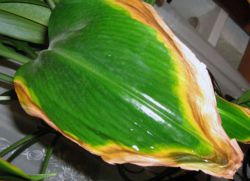
If your apartment has dry air, pets will need frequent spraying. But sometimes that doesn't help either. The situation will be saved by pallets with gravel or expanded clay, where water is added as necessary. Then flower pots are placed on pallets. Some flower growers simply acquire humidifiers.
From a sunburn, only moving the pot to another place or curtaining the window with a translucent cloth (gauze) will help. With an excess of fertilizer, transplanting the plant into new soil is also recommended. In case of damage by pests, it is recommended to treat the aerial part of the flower with a soapy solution or a fungicide.